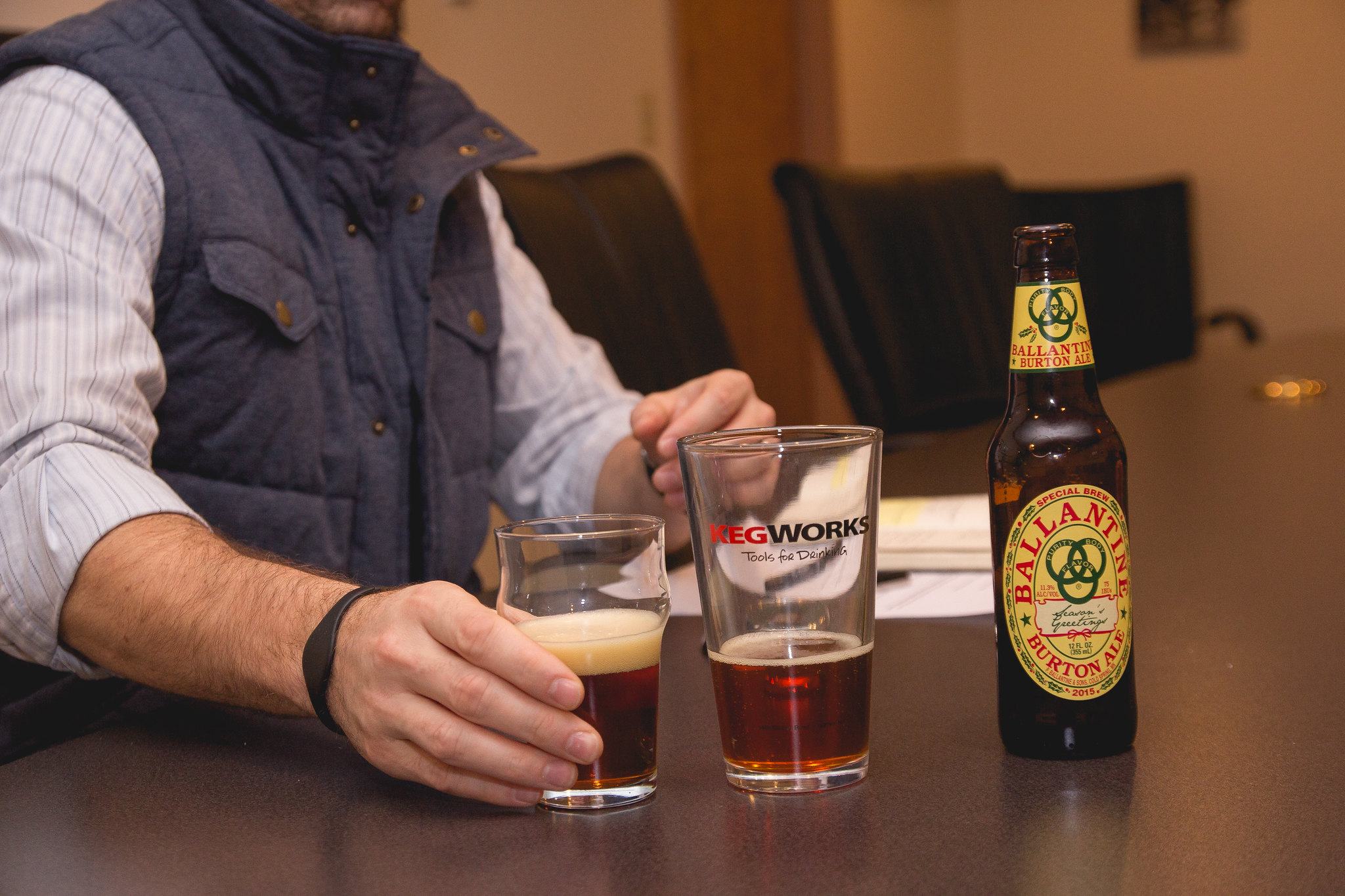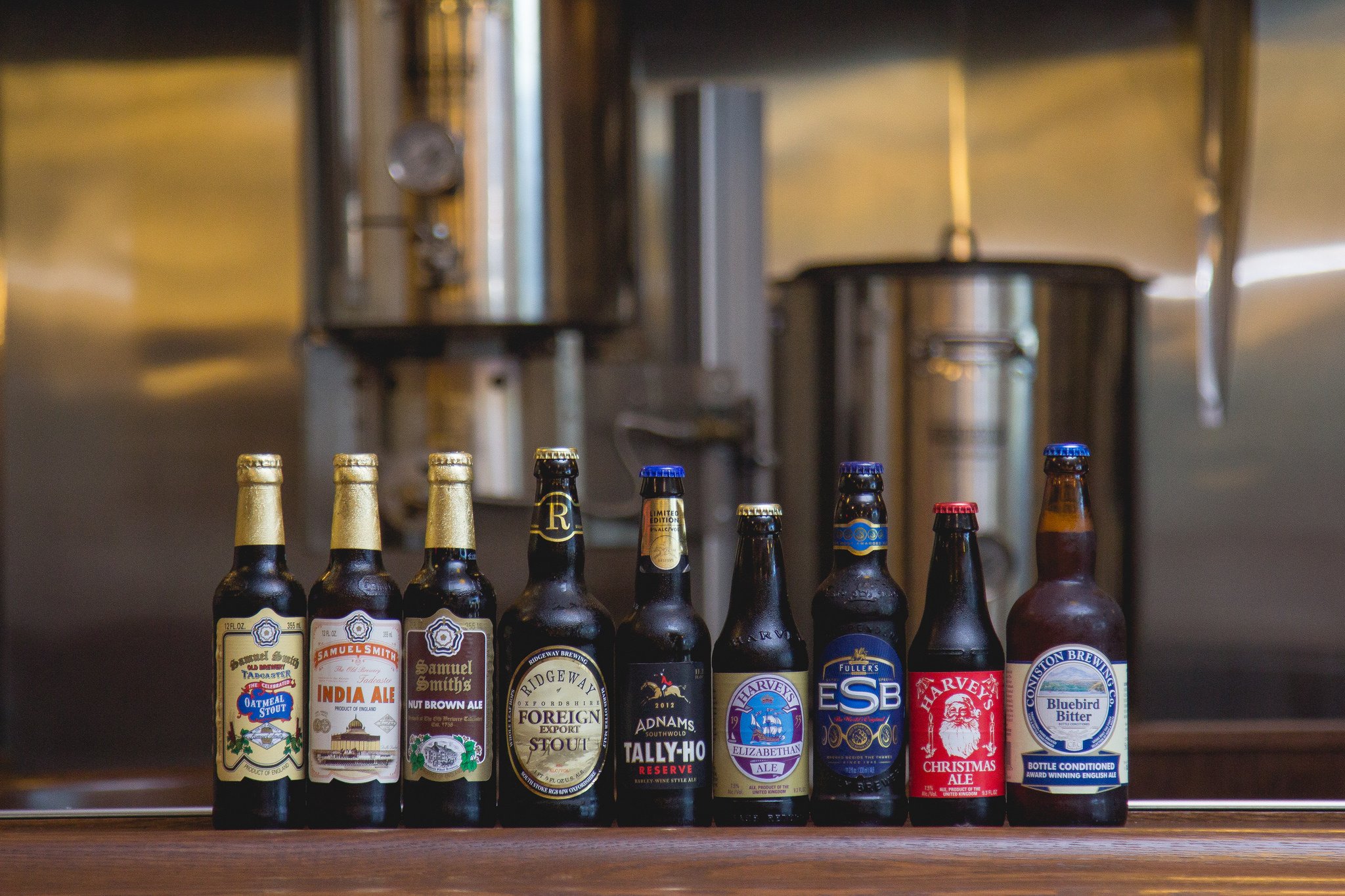
Poor little English Pale Ale. You get such a bad rap. You’re not really hoppy. You’re not very malty. You weren’t brewed with Asian Pears, Spruce Tips, or a canned ham. You’re not aged in a bourbon barrel or served with a slice of watermelon. You just are. And you are delicious.
English Pale Ale was originally a draught ale served as fresh as possible under no pressure (by gravity or hand pump only), at cellar temperatures, i.e. cask or real ale. These beers originated in the city of Burton-On-Trent, and were created as an alternative to country-brewed pale ale around the start of the 20th century. Once brewers knew how to Burtonize their water (the water there was hard enough to build a structure on) they were able to successfully brew pale beers and they used crystal malts to add fullness and roundness to the palate. That hard water helped with clarity and enhanced the hop bitterness.
 English Pale Ales have some malt aroma, with a touch a caramel. Fruitiness is mild to moderate, as is hop aroma. They'll appear yellow to light copper in color, with good to brilliant clarity and a low to moderate off-white head. These are light to medium bodied beers with low carbonation, although bottled versions tend to have a bit more. Flavor-wise, these beers have medium to high bitterness, but low to moderate hop flavor with about the same amount of malt. Balance is often noticeably bitter, but it wont overpower the malt flavor.
English Pale Ales have some malt aroma, with a touch a caramel. Fruitiness is mild to moderate, as is hop aroma. They'll appear yellow to light copper in color, with good to brilliant clarity and a low to moderate off-white head. These are light to medium bodied beers with low carbonation, although bottled versions tend to have a bit more. Flavor-wise, these beers have medium to high bitterness, but low to moderate hop flavor with about the same amount of malt. Balance is often noticeably bitter, but it wont overpower the malt flavor.
If I'm hungry, and I have an English Pale Ale in one hand, I prefer to have a steaming basket of Fish and Chips in the other. Lots of other foods go great with these beers, especially grilled meats—pretty much anything with caramelization—you name it. The bitterness and the carbonation in the beer will lift the fat while cleaning your palate for your next bite. A great beer for lunchtime, it'll also go well with a variety of sandwiches. And one other great pairing for these beers are pastas with cream-based sauces—I'm talking Alfredo, Gorgonzola, Primavera—the caramel sweetness in the beer picks up on these.
There are 3 reasons why this is a great, refreshing session beer: low gravity, low alcohol and low carbonation. Drinkability is a very critical component of this style; thankfully there are a lot of good examples out there and they're a great first beer to attempt if you're a fledgling homebrewer. Rumor has it that Fuller's London Pride (and one of my top 5) was the late, great Michael Jackson's (known as The Beer Hunter) preferred session beer. Hard to argue with that. So when you're thirsty for a brew, and searching for simplicity, grab one of these. Cheers!



Leave a Comment